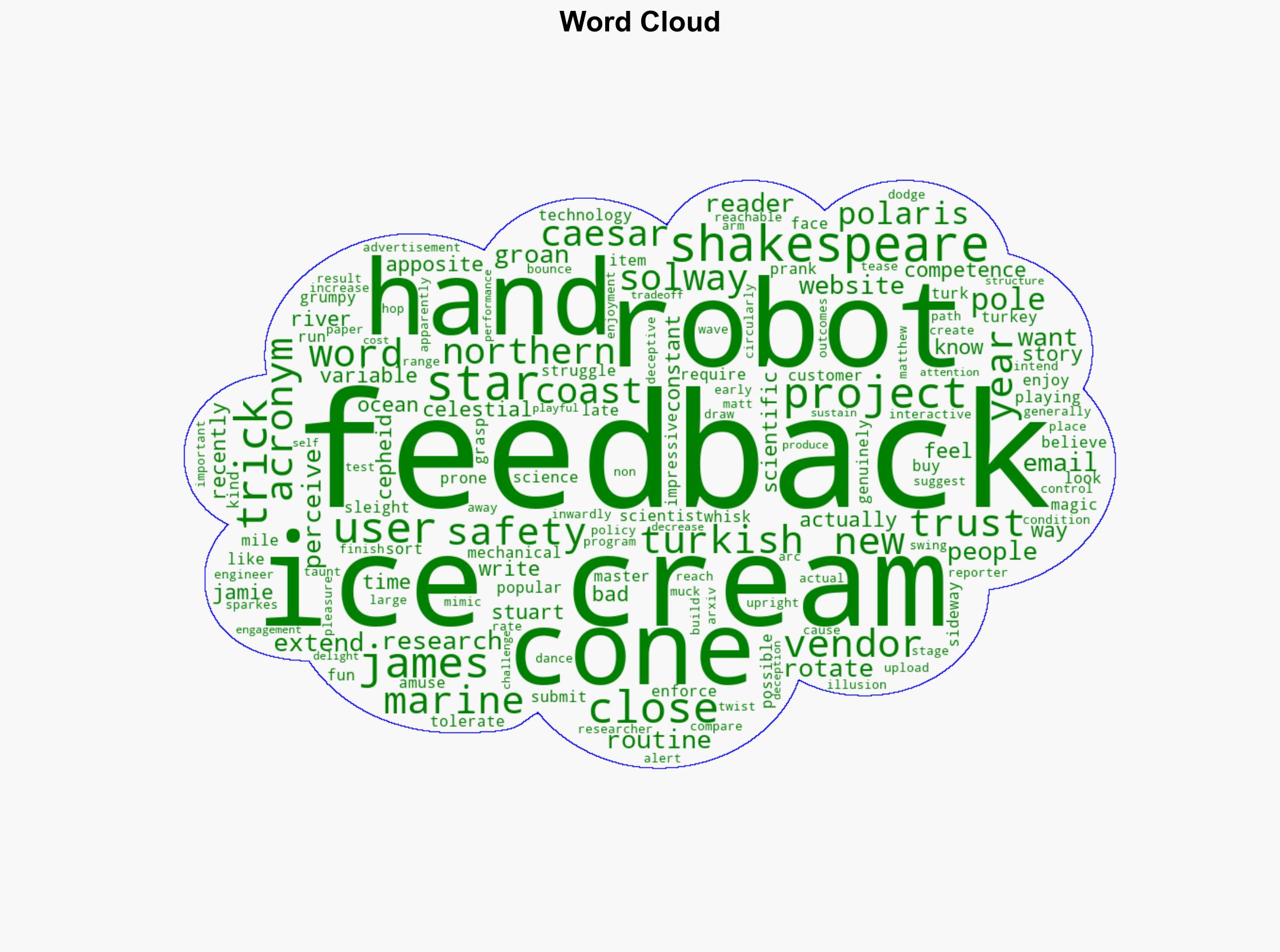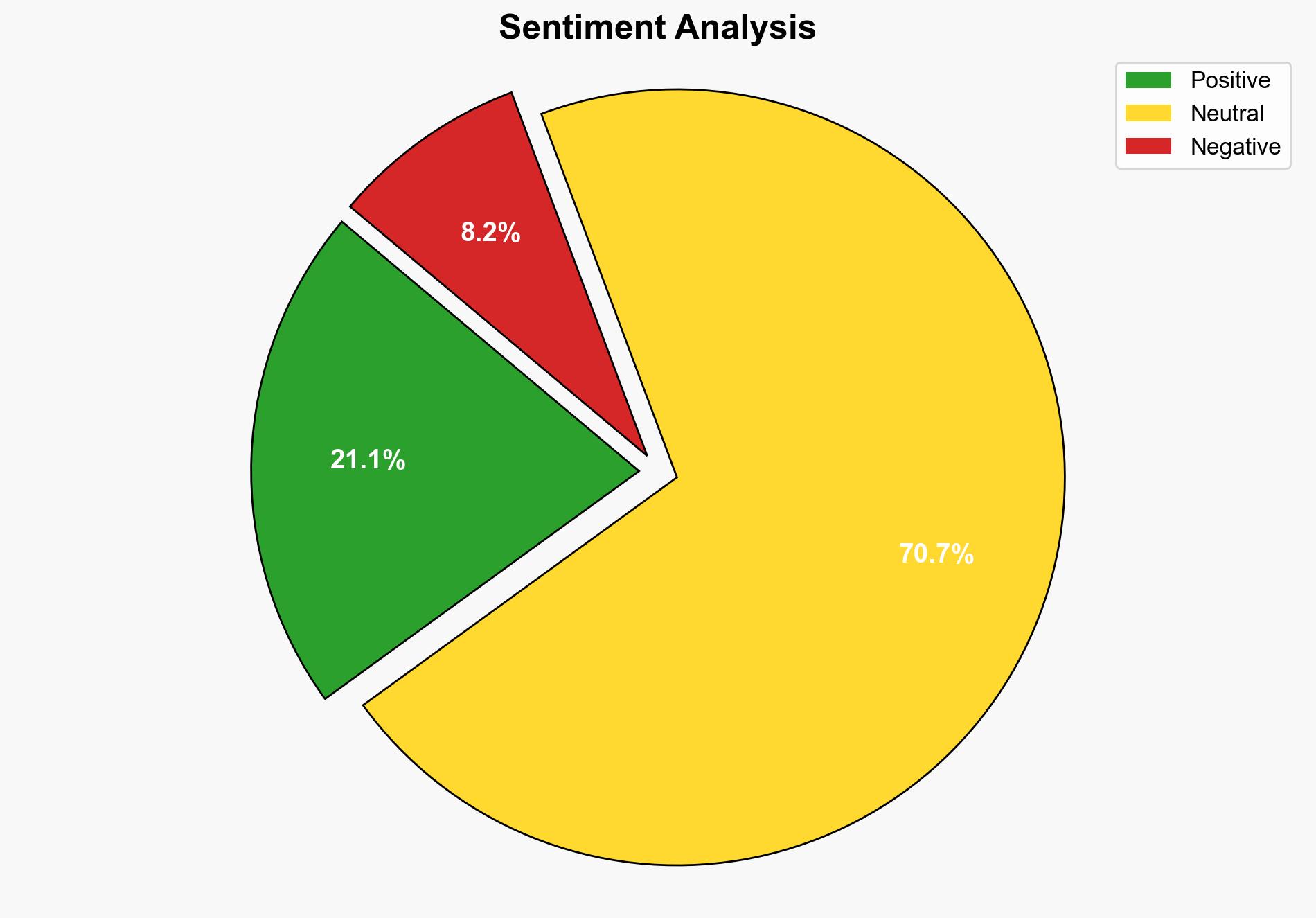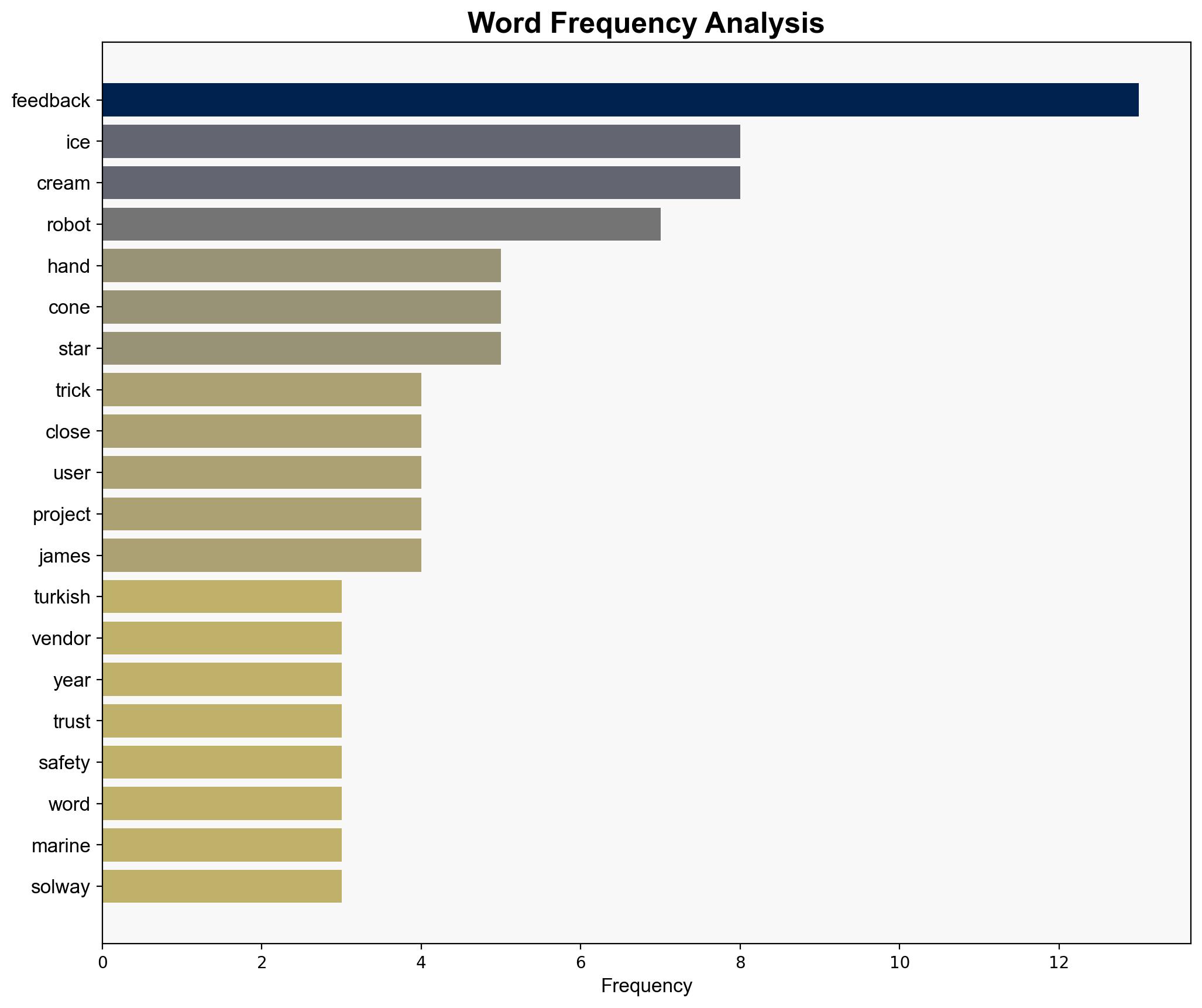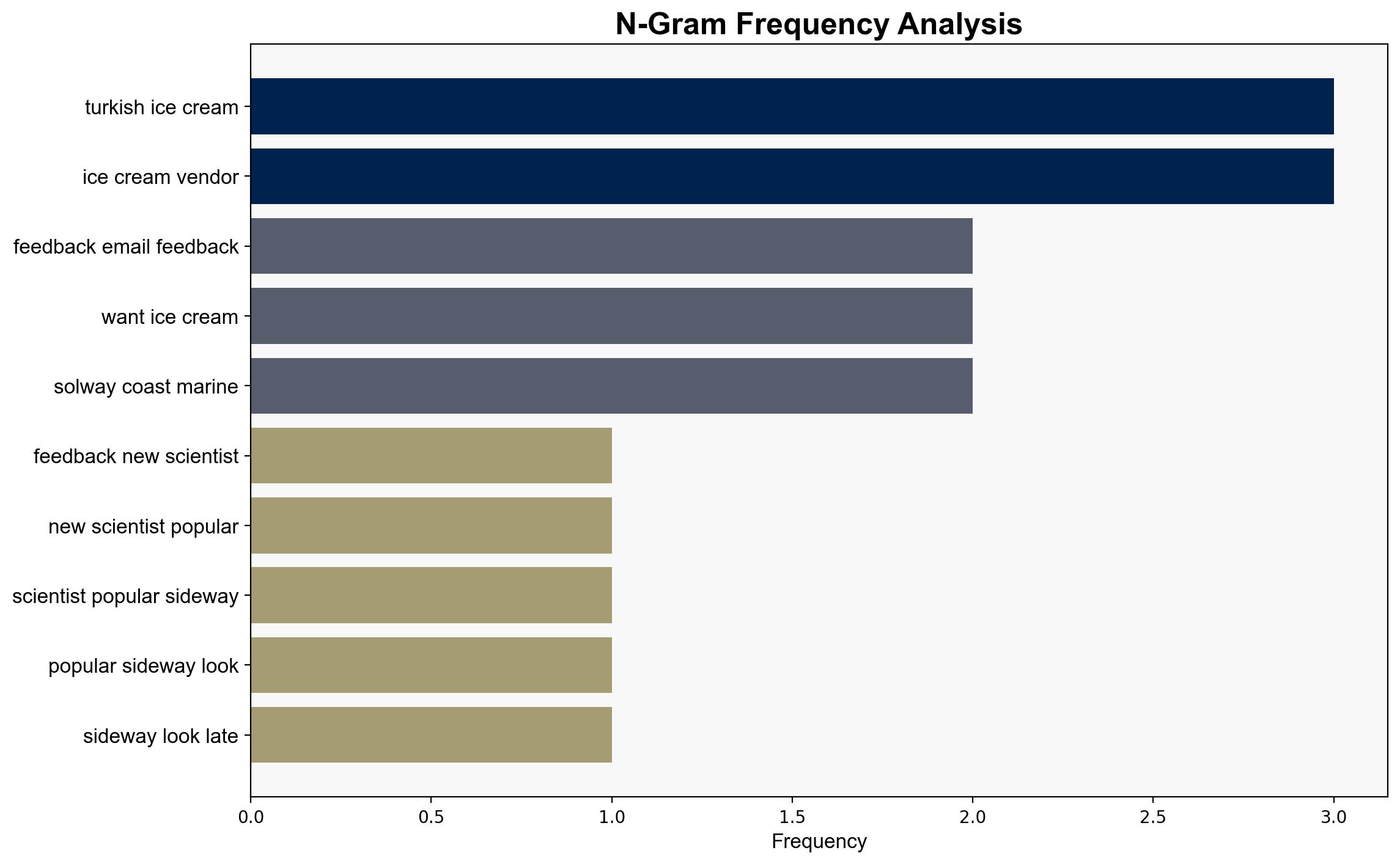Is a robot programmed to prank you annoying Yes – New Scientist
Published on: 2025-11-05
Intelligence Report: Is a robot programmed to prank you annoying Yes – New Scientist
1. BLUF (Bottom Line Up Front)
The most supported hypothesis is that the development of prank-playing robots is primarily intended for entertainment and engagement, rather than practical application. Confidence level: Moderate. Recommended action: Monitor advancements in robotic programming for potential applications beyond entertainment, particularly in areas where trust and predictability are critical.
2. Competing Hypotheses
1. The robot programmed to mimic Turkish ice cream vendors is primarily a research tool to explore human-robot interaction and enhance user engagement through playful deception.
2. The robot is a prototype for broader applications in customer service and retail, aiming to improve user experience by incorporating elements of surprise and entertainment.
Using Bayesian Scenario Modeling, the first hypothesis is better supported due to the emphasis on user engagement and the structured tradeoff between delight and trust as highlighted in the source text.
3. Key Assumptions and Red Flags
– Assumptions: The primary assumption is that users find playful deception engaging and not detrimental to trust. Another assumption is that the research is focused solely on entertainment without ulterior motives.
– Red Flags: The potential for decreased trust in robots if such deception becomes widespread in critical applications. Lack of data on long-term user reactions to such interactions.
4. Implications and Strategic Risks
– Economic: Potential for increased consumer interest in interactive technologies, but also risk of backlash if trust issues arise.
– Cyber: The integration of deceptive behaviors in robots could lead to vulnerabilities if not properly managed.
– Psychological: The balance between entertainment and trust is delicate; mismanagement could lead to negative perceptions of robotic technology.
5. Recommendations and Outlook
- Monitor the development of similar technologies to assess their impact on consumer trust and engagement.
- Encourage transparency in the programming of robots to ensure user awareness and consent.
- Scenario Projections:
- Best: Robots enhance customer experience in retail, leading to increased adoption.
- Worst: Widespread distrust in robotic technology due to perceived deception.
- Most Likely: Continued niche use in entertainment, with gradual exploration of broader applications.
6. Key Individuals and Entities
– Matthew Sparkes: Reporter mentioned in the context of the article.
– Stuart McGlashan: Mentioned in relation to a conservation project.
– Jamie Pittock and Jennie Mallela: Researchers involved in a project related to river flow management.
7. Thematic Tags
robotics, human-robot interaction, consumer technology, trust in technology




